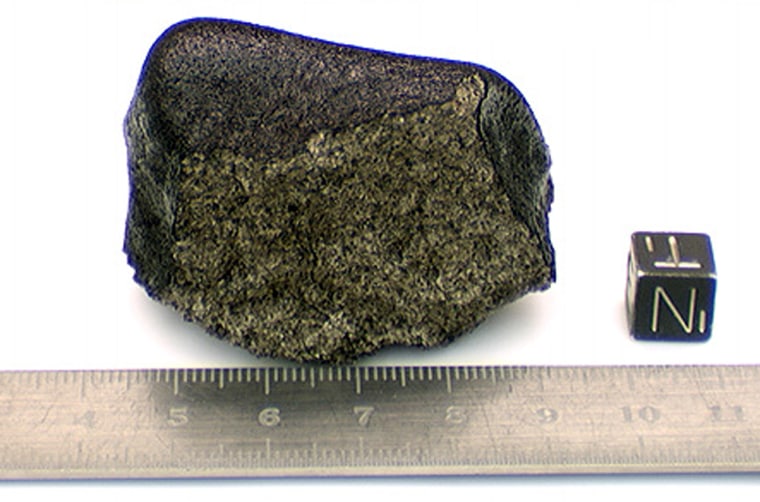University of New Mexico researcher Barbara Cohen now knows for certain that the rock she found while trolling the barren Antarctic landscape is special.
She and a team of geologists picked up a chunk of the moon — one of only about 30 ever found on Earth.
"We found it almost a year ago, but the analysis wasn't finished until last month," she said. "When I found out it was from the moon, I was so elated. The team knew it was something interesting in the field, but we couldn't test there. We just had to wait."
Cohen is an assistant research professor at the University of New Mexico's Institute of Meteoritics.
She and a team of eight geologists collected the fist-sized meteorite on a six-week trip during the Antarctic summer, in December and January. They were trolling the La Paz ice sheet on snowmobiles when they found it.
Finding a meteorite is like finding a puzzle piece to the universe because each chunk tells scientists more about how other planets and asteroids developed, Cohen said.
"It's a real primal thrill of discovery, because no one has ever seen that rock before you," she said. "If you know the rock you found is unusual, your mind just goes crazy wondering what it could be. It could be the first meteorite ever found from Venus, or it could be from the moon or Mars."
Cohen's Antarctica trip was part of a National Science Foundation program to collect meteorites. Scientists from all over the world are chosen each year to search Antarctic ice sheets for new meteorites, which fall on the ice and stick out in the snowy surroundings.
Astronauts collected hundreds of pounds of moon rocks during the Apollo missions of the 1960s and 1970s, but lunar meteorites are important because they give scientists samples from other parts of the moon, Cohen said.
The rock, along with about 1,000 other meteorites collected on the same trip, were sent to NASA's Johnson Space Center in Houston, which separates the most interesting ones and sends them on to the Smithsonian Institution for analysis.
After analysis, the samples go back to Houston, and the space center sends out notification to scientists who might be interested in the rock. The rocks of interest are broken up and shipped out to the planetary science academic community, Cohen said.
"About 95 percent of the meteorites we find are ordinary chrondites, from asteroids, so of the 1,000 we picked up, about 950 were pretty normal," she said. "This was one of about 50 that were sent on to the Smithsonian — we knew it was something special when we found it."
With the analysis complete, Cohen plans to apply to get a chunk of the rock back from Houston.
